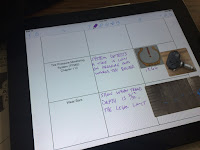Exploring Differentiation
As teachers, our intention is to best meet the needs of our learners. And it is an ever-changing path. With diverse learners, come diverse needs. So what do we do?
Enter differentiation.
But what is differentiation? From the ASCD (Association For Supervision and Curriculum Development),
Differentiated instruction is an approach to teaching in which educators actively plan for students' differences so that all students can best learn. In a differentiated classroom, teachers divide their time, resources, and efforts to effectively teach students who have various backgrounds, readiness and skill levels, and interests.
These past two weeks, Dawn Bodden (TLF), Denise Chapman (Differentiation Specialist), and I (DTC) had the opportunity to facilitate two days of professional development with members of the Social Studies Department and also the English Department. It was meant to serve as a day of learning and curriculum development. Our goal was for teachers to walk out of the meeting with concrete ideas and activities that they could use in their classrooms to meet the diverse needs of our diverse students.
We started the day by talking about the difference between differentiation and modification. Denise led us through a few graphics to help us separate the two ideas in our minds. From there, we discussed diverse learning needs and how we already address them in the classroom. Without question, we all addressed different needs in different ways in different places.
Image via The Differentiated Classroom, 2nd Edition by C.A. Tomlinson
Keeping those ideas in mind, we discussed our course objectives. This was an important conversation after talking about the difference between differentiation and modification. We wanted to make sure that all of our students are achieving high standards of learning through our course objectives.
Once we established where we were going, we talked about how to get there through differentiation for content, process, and product and what that might look like. At this point, ideas started to take hold and PLTs brainstormed some different ways they would like to add differentiation in their various lessons. Two useful tools for this process were this Differentiation Chart and this breakdown of tech tools to help facilitate differentiation.
In the afternoon, we first spent time learning about some different activities and strategies to help facilitate inclusion and differentiation like dots and dashes, flipped classroom, and station rotation. After this, the PLTs collaborated, researched, and brainstormed the best way to continue to differentiate their classes to meet the needs of our diverse learners.
And with that I wrap up the blog for the 2016-2017 school year.
As always, if you have ideas or suggestions for blog posts for next year or would like to contribute to the blog with a post you write or co-write, please let us know!
Have a wonderful summer!


Comments
Post a Comment